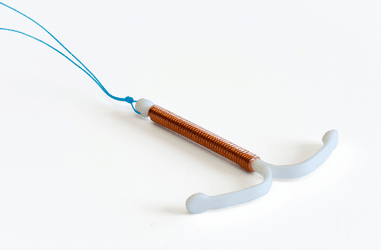What Are the Grounds for a ParaGard IUD Lawsuit Settlement

The makers of ParaGard have faced many lawsuits from injured women who used their product and have paid millions in settlements as a result. The grounds for a ParaGard intrauterine device (IUD) lawsuits are that the company acted negligently, the product had a design or manufacturing defect, or the company failed to adequately warn consumers of potential risks.
Attorneys can help women who have sustained injuries because of the ParaGard IUD recover compensation for the losses they endured. In addition, holding these companies accountable can help prevent women from sustaining injuries because the companies will stop selling the device or properly warn consumers.
What Is the ParaGard IUD?
According to Cleveland Clinic, the ParaGard IUD is an intrauterine device that prevents pregnancy with over 99% effectiveness. It is shaped like a “T” and placed into the uterus. The copper in the IUD prevents pregnancy because of its toxicity to sperm and eggs. After the IUD gets inserted in a woman’s uterus, it can prevent pregnancy for up to ten years.
Many hormonal birth controls can cause blood clots and other issues. However, because ParaGard doesn’t release hormones, it eliminates these risks. Unfortunately, there are other risks, such as breakage upon removal of the IUD.
Grounds for Bringing a ParaGard IUD Lawsuit
While ParaGard manufacturers warn of potential risks such as bleeding between periods, cramps, and menstrual pain, they do not inform the public of potential risks of what could happen when the device gets removed. Women had stated that the device broke inside of them when medical professionals attempted to remove it.
The injuries women can sustain from a broken ParaGard IUD can cause long-term complications that could affect them for the rest of their lives. For example, they could suffer perforation of the uterus or cervix, allergic reactions to the pieces left in the body, IUD migration, infertility, infection, or the IUD pieces lodged in their organs.
Grounds these women can sue for include defective design, manufacturing defects, failure to warn about the potential risks, and negligence.
Defective Design
The manufacturers should have done proper testing to ensure the design of the product worked effectively upon removal. When creating the design, they should have known that the device could break. If the design of the product had been better, it would not have broken upon removal, and the women would not have sustained injuries because of the device.
Sometimes, product designers could rush through the design process and not carry out the proper testing. If this happened, the plaintiffs could hold the product designer liable for not properly testing their product before it entered the manufacturing phase.
Manufacturing Defect
If the device became defective during the manufacturing process, grounds for a claim or lawsuit could include a manufacturing defect. Typically, the manufacturers of the device could have legal responsibility if the device was defective before it left the production facility.
Failure to Warn About the Potential Risks
When product manufacturers sell to consumers, they must give adequate warnings of potential risks. Unfortunately, the makers of ParaGard might not have provided information to medical professionals on how to remove the device to prevent it from breaking. They also didn’t warn consumers of its potential to break during removal.
Product manufacturers must properly warn consumers and medical professionals who use their products of the potential hazards their products could cause. Unfortunately, this allegedly did not happen, which is why the makers of ParaGard may be to blame.
Negligence
Common grounds plaintiffs have used in the ParaGard cases indicate that the liable party acted negligently. To prove negligence against the makers of ParaGard, the plaintiff must apply the following elements to their case:
- Duty of care: The makers of ParaGard owed consumers the duty of care to provide a safe and effective product. They also had the duty to warn of any potential risks the device could cause.
- Breach of duty: The makers of ParaGard breached their duty by designing, manufacturing, or selling a product that could cause harm and not properly warning the public about the potential harm.
- Causation: The breach of duty caused the plaintiffs to sustain injuries because the devices broke upon removal.
- Damages: The plaintiffs sustained damages because of their injuries. Damages could include past and future medical bills, lost income, diminished earning capacity, pain and suffering, and emotional distress. Damages can vary case by case.
The makers of ParaGard acted negligently because they knew the potential risks their device could cause and failed to warn the public. As a result, many women sustained injuries, which is why ParaGard lawsuits are now an ongoing legal action.
Paragard Class Action Lawsuit Attorneys can help the victims determine their eligibility to begin an individual lawsuit or join a class action case. If they qualify, they can help build a strong case against the liable party for causing their injuries.
An Attorney Can Help You Establish Grounds for a ParaGard IUD Lawsuit Settlement
After sustaining an injury from the ParaGard IUD, you might not know where to turn. A mass torts attorney can help you figure out what grounds you can sue the makers of ParaGard for, as well as identify the damages you incurred to recover the maximum compensation for your injuries. Because these are class action or mass tort lawsuits, it is beneficial to have an attorney who has experience navigating these complex legal issues. Consult an attorney’s office today for a free consultation to discuss your ParaGard IUD injuries. Fill out the contact form, and a lawyer from our network can get in touch with you soon. They can review your case for free and provide information about your legal options and how they can help you. If you decide to work together, they may represent you on a no-win, no-fee basis.


